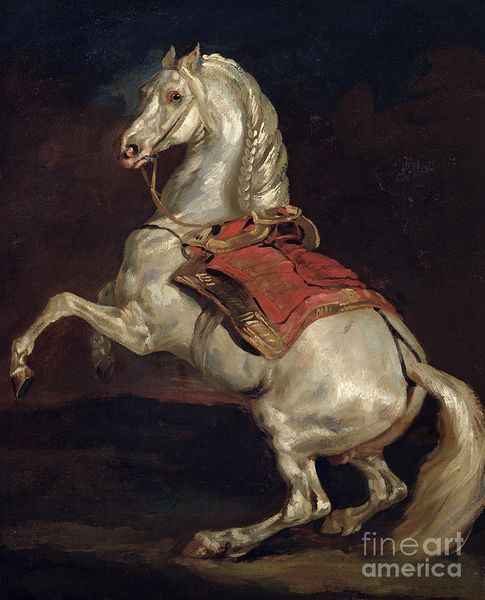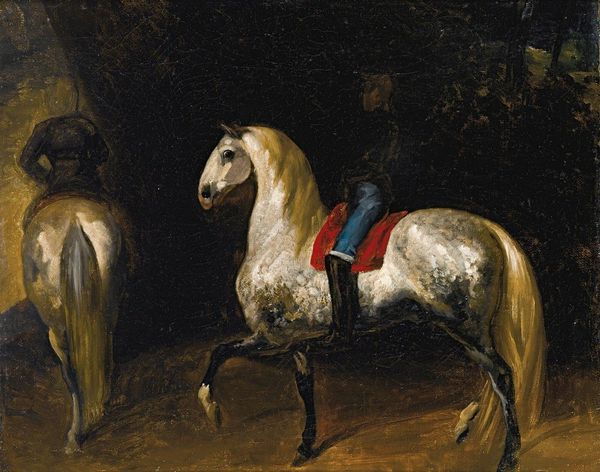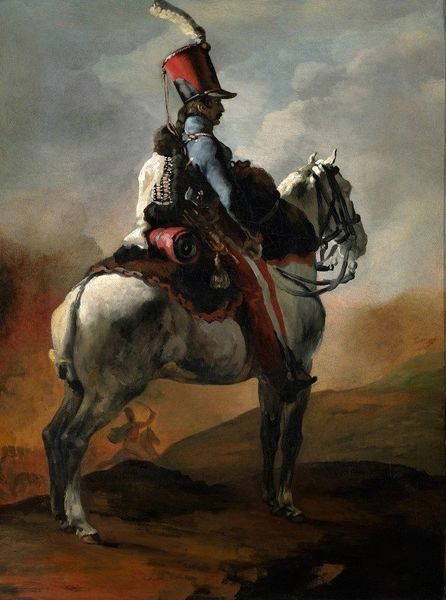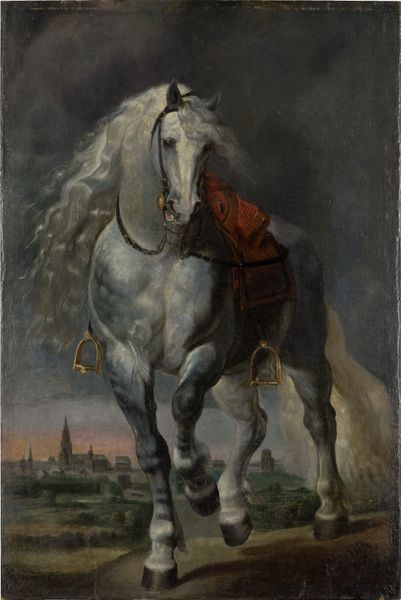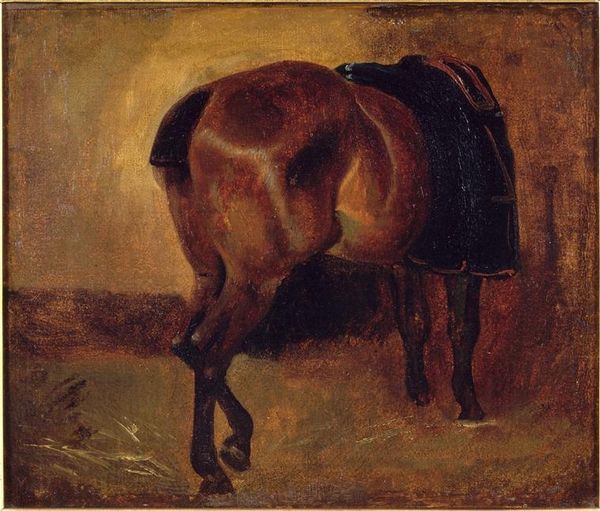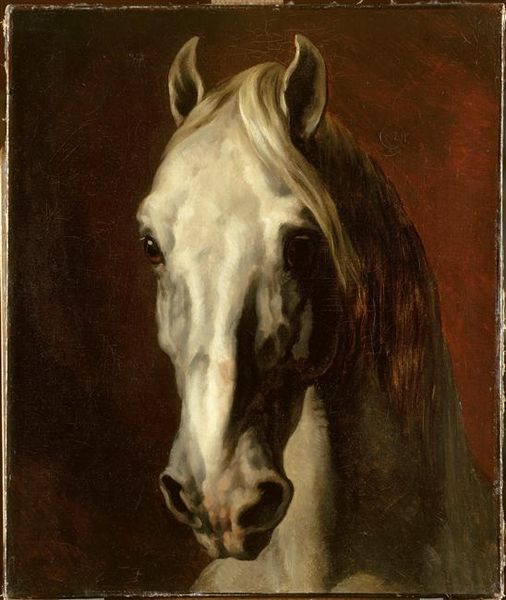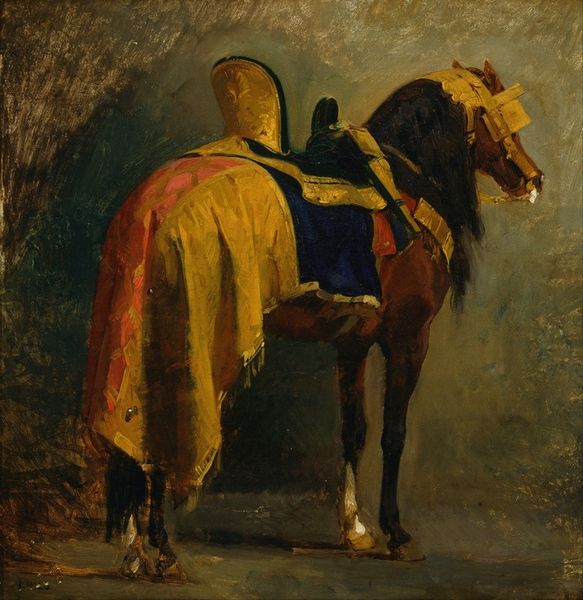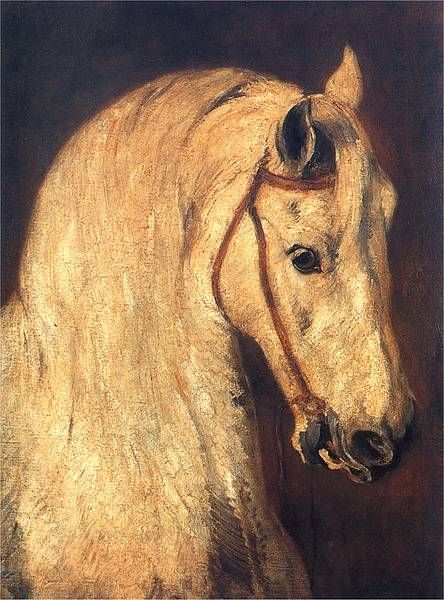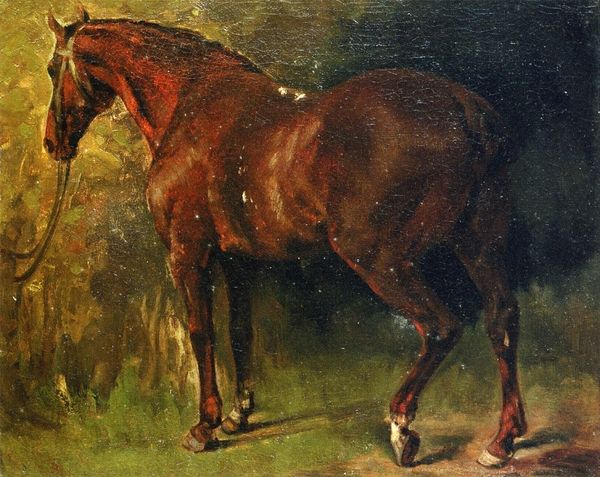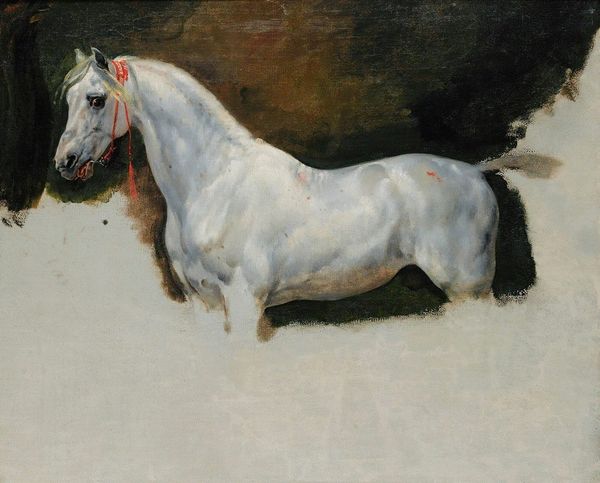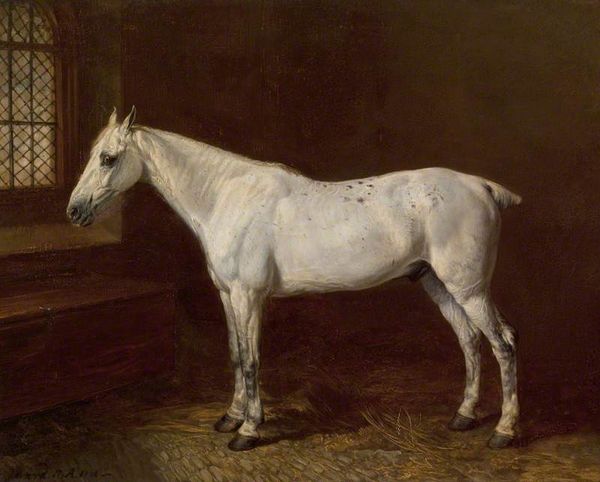
painting, oil-paint
#
portrait
#
baroque
#
animal
#
painting
#
oil-paint
#
oil painting
#
underpainting
#
animal portrait
#
horse
#
history-painting
Dimensions: 310 x 245 cm
Copyright: Public domain
Editor: We're looking at Velázquez's "A White Horse" from 1635, an oil on canvas currently residing in Madrid's Palacio Real. I'm struck by how the darkness seems to press in on the horse, making its whiteness so prominent. What do you see when you examine the formal qualities of this work? Curator: The immediate draw is, as you say, the stark contrast. Consider how Velázquez utilizes the tenebrism, a pronounced chiaroscuro. Notice how the light doesn't merely illuminate, it sculpts. It defines the musculature of the horse, drawing our eye along specific lines and planes. What sort of spatial relationships do you observe between the horse and its environment? Editor: Well, it almost feels like the background is undefined, creating a sense of shallow space. The horse is undoubtedly the subject, highlighted by the light, but there’s not a lot of information about where the animal exists within the frame. It is set in a vague interior with the use of primarily neutral earth tones, making the subject "pop" even further. Curator: Precisely. This lack of spatial clarity focuses attention on the interplay of form and color. Observe the limited palette: mostly shades of white, grey, and brown. How does this impact the composition? Consider how the horse's dynamism, caught mid-prance, contrasts with the relative stillness of the implied setting. It strikes the eye to feel off balanced. Editor: It seems intentional, though. The contrast between light and shadow, motion and implied stillness… it's like a study in contrasts. I never would have picked up on this! Curator: It is these considered relations that bring out meaning in visual experience. Understanding these techniques and being conscious of the art will bring more meaning in what we visually perceive.
Comments
No comments
Be the first to comment and join the conversation on the ultimate creative platform.
